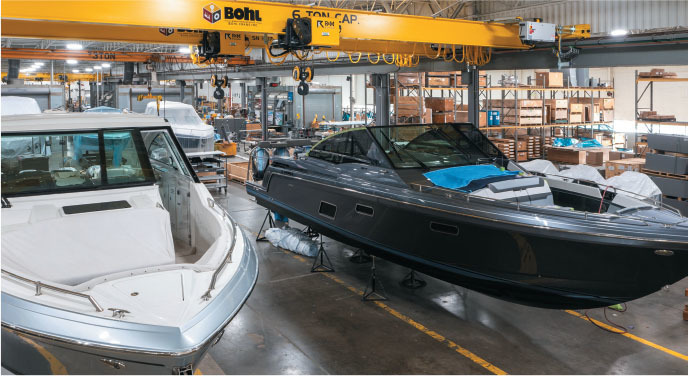PRODUCT SPOTLIGHT
BY SANDY SMITH
The hoisting equipment sector may be both stable and mature—but that doesn’t negate the work of the Hoist Manufacturers Institute (HMI), nor does it signal that the sector will always remain that way.
HMI, a 107-year-old organization, represents suppliers of hoists and trolleys and, throughout its history, has developed performance and safety standards for the industry. That work will continue to be important to HMI’s mission, said Rob Beightol, marketing director for MHI member Gorbel. Beightol became president of HMI in 2024.
“With companies struggling to hire workers, we want to make sure the safety side of overhead lifting is always being addressed. With a lot of newer workers to the field, we want them to look to HMI for materials and webinars to assist them with creating and maintaining a safety environment.”
New initiatives are in the works as well. Damian Mulcahy, director of sales in the U.S. and Canada for MHI member R&M Materials Handling, Inc. and HMI vice president, would like to see more “participation from all the key stakeholders in the industry, to work together for the greater good of the industry and the people who buy and use the products,” he said. Increasing participation tops his list of goals for the near future.
HMI in 2024 is poised to be even more important in leading the industry in new innovations, as end users look to hoists as a key component of a modern material handling set up.
Changing Demands
It’s rare that safety and productivity go hand-in-hand, but with advanced features in hoists, end users are achieving just that.
“The marketplace is looking for more advanced features, things like sway control, hook centering, advanced overload detection,” Mulcahy said. Remote monitoring of connected equipment is also a strong selling point. “When the data is centralized and can be accessed remotely, you’re taking people out of harm’s way. They’re typically up in the air, with moving parts and pieces. To have a person up there to do troubleshooting is more dangerous and time-consuming.”
Hook centering keeps equipment in place when it needs to be there, instead of having to be manually driven to the location, Mulcahy said.
Automation is another growing trend in hoists, which “leads back to safety and productivity.” The same communication systems that allow your car to notify you that the tire pressure is low will be available in overhead crane systems. “The system will be able to notify the user it has an electronic control component that needs to be replaced, or a bearing has reached its expected life,” Mulcahy said.
HMI not only pays attention to the trends but also asks its members to provide case studies that can be shared with end users and purchasers to understand hoists and the opportunities they provide.
Efficiencies Gained
Despite the innovations in technology, overhead hoists remain a fairly uncomplicated piece of equipment, Beightol said. “Companies are really looking for pieces of equipment that they don’t have to think too much about but will solve their issue.” HMI steps in to share the word that hoists “don’t take a lot of time to be up and running.”
Though hoists have a role in material handling automation solutions, “we want the entire system to be easy to use,” Beightol said. “Most hoist manufacturers work with distributors or integrators to “take the guesswork out for the end user.”
Hoists can help solve worker shortages, where a multiple-person lift can be handled with fewer people. “If you put a hoist in place, especially a powered hoist, chances are you may be able to move a dual person operation into a single person operation,” Beightol said.
Click here to read the full article.
 MHI Solutions Improving Supply Chain Performance
MHI Solutions Improving Supply Chain Performance

